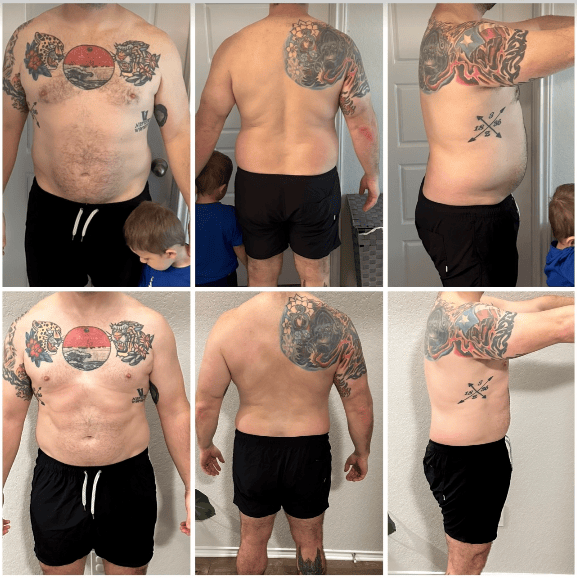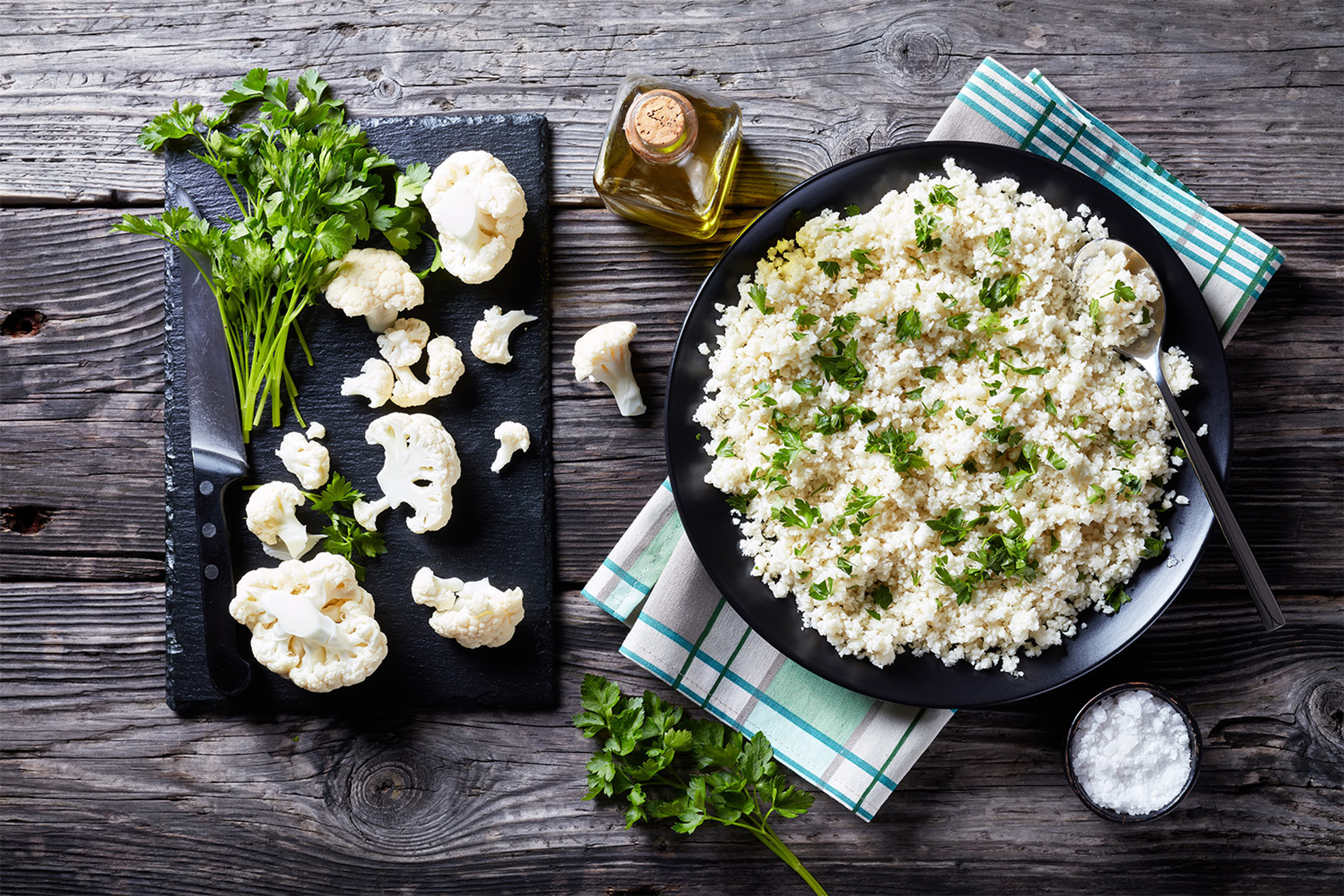Rice seems like it would be a staple of a healthy diet. After all, it's a good substitute for noodles, which are filled with carbohydrates and contain plenty of calories and other things that aren't good for your diet, especially if you're eating gluten-free or following a keto diet plan.
However, plain white rice isn't so good for you. It contains enough carbs (although fewer than noodles) to throw you out of ketosis. In addition, white rice doesn't have the vitamins and minerals built into it that some alternatives do.
So, what should you do? Check out this list of healthy rice alternatives and substitutes to see what fits your lifestyle.
Rice Alternatives
There are several white rice alternatives, all of which can be substituted in a recipe. While you may want to watch for serving conversions, for the most part, you can substitute them on a one-for-one basis.
These alternatives might taste a bit different than white rice, but that will only enhance the flavors of your foods, making them taste better while at the same time making them healthier. Are you ready to learn about some of these alternatives?
Quinoa
There's a reason why quinoa is so popular these days. Not only is it lower in carbohydrates than white rice, but it's also much higher in protein. It even contains plenty of fiber, and we all know how important that is to a healthy diet. This makes it a staple of a gluten-free or keto diet and a healthy alternative for those who simply want to eat better.
Quinoa is also easy to make since it's very much like rice. Measure out your quinoa, add the required amount of water, and then let it simmer for 15 minutes.
Farro
Although farro is a wheat-based product, meaning that it may not be the best option for those with a gluten intolerance, it does contain fewer carbs than white rice, making it good for people following a keto diet.
As far differences from rice are concerned, farro is a bit chewier, and it has a unique flavor that will enhance your meals. It's as easy to make as quinoa, as all you need to do is mix one part farro with three parts water, stir, and then cook it until the farro is tender and ready to eat.
The grains are slightly larger than some of the other rice alternatives on this list, but don't let that dissuade you from adding it to your diet. You might find that you like it better!
Chopped Cabbage
You're probably wondering how chopped cabbage can be considered a rice substitute. However, you'd be surprised at how easily it can take the place of rice in a meal. Known for its unique flavor and texture, cabbage can add another dimension to your meals, and it contains plenty of healthy vitamins and minerals.
To prepare it, simply slice the head of cabbage into sections, remove the main heart or stem, which is hard to chew, and then place it in your food processor. Pulse it until it's in smaller chunks, and then saute it on the stove with some olive oil. If you really want to enhance the flavor, add in some minced garlic as well. Then, place it on your plate alongside the rest of your meal for a healthy, gluten-free addition that also tastes great.
Couscous
While couscous is made of flour (it's quite similar to pasta), making it a poor substitute for those keeping an eye on their gluten intake, it's a good option for those who simply want to eat something healthier than white rice.
Once couscous has been cooked (you mix it with water and cook it like rice, then fluff it before serving), you can add it to just about any meal. Make sure to look for whole wheat couscous, as it's not only better for you than the other varieties, but it also contains more protein and fiber, rounding out your lunches and dinners.
Barley
Barley is more than just an ingredient found in beer. It makes a good rice substitute, adding flavor and plenty of health benefits to your meals. Like couscous, barley isn't a good option if you're eating gluten-free or trying to avoid carbohydrates, but for those who just want to eat healthier, it's something to look for.
Why is barley so good for you? It contains plenty of antioxidants, which help decrease the aging process. Plus, it has a lot of fiber, protein, and around 30 other healthy compounds that your body needs. In addition, it can even help lower your bad cholesterol levels.
Riced Cauliflower
If you spend your time looking up gluten-free and keto-friendly recipes, then you're probably already familiar with riced cauliflower. It’s easy to make, as all you need to do is place a chopped-up raw cauliflower in a food processor until it consists of small particles that look like rice. It's also a great option that contains plenty of healthy compounds, like fiber.
Cauliflower is also very low in carbohydrates and is super low in calories. Look at it this way – one-half cup of white rice has 100 calories. A half-cup of riced cauliflower? Only 13 calories.
Riced Broccoli
Broccoli is low in carbs and gluten-free, and it tastes great, making it something that you definitely want to add to your diet.
Riced broccoli is very similar to riced cauliflower, with the main difference being the vegetable that it's made from. Plus, broccoli is slightly higher in fiber and protein, and it even contains a lot of vitamin C, so it's super good for you.
In order to make riced broccoli, remove the heads of the plant from the stalks and then put the heads in your food processor. Cook them slightly to soften them, or eat them raw and add them to your meal.
Shirataki Rice
Here's a rice alternative that you probably haven't heard of. This one is made of konjac root, which is very popular in Asia. The rice is made from the root, as it's processed into smaller bits that resemble rice (hence its name.)
It contains a unique fiber known as glucomannan, which is very good for you. In addition, if you look at the packaging, it claims to be calorie-free. While this isn't exactly the case, one single serving consists of 5 calories, which is low enough to be considered almost nothing. Also, shirataki rice is low in carbs and is gluten-free, for the record.
Freekeh
Another rice alternative that isn't commonly used, freekeh, isn't for those on keto or gluten-free diets because it is made of whole grains.
Unlike barley and even farro, the whole grains that make up freekeh are harvested before they're fully opened and still green, giving them a different flavor altogether. While freekeh does contain carbohydrates, it also has plenty of protein, fiber, and even your standard daily serving of protein.
Other Forms of Rice
While the emphasis here has been on alternatives to white rice, that leaves out several other types of rice.
The main issue with white rice is that it's been heavily processed. This takes out a lot of its nutritional value. When you add in the fact that it's also high in carbs, well, that means that you need to find a substitute.
However, there are plenty of other types of rice, from brown rice (which is less processed) to basmati (which isn't processed at all, other than having it go through a two-year drying process) which are better for you than white rice.
If none of the rice substitutes sound like they're up your alley, just reach for an entirely different type of rice!
Finding the Best Rice Alternatives
With so many rice alternatives out there, you might feel a bit overwhelmed when trying to find one or two that you like the best. The best thing to do is try them all!
Give each one a shot (as long as you aren't eating gluten-free or low carb, as some do contain gluten and plenty of carbs) and see which ones best enhance your meals. There are numerous options, and all bring a slightly different taste to your meals. Who knows? You might find that you like them all.
Sources:
8 Delicious Rice Substitutes to Keep Stocked | Better Homes and Gardens
11 Healthy Rice Substitutes | Healthline
12 Rice Substitutes Suitable For All Diets | Medical News Today
About Author: Mario Mendias





